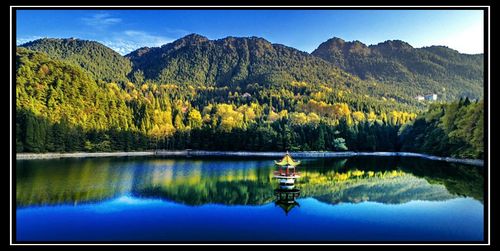India is famous for its diverse cultural heritage, which is one of the richest and most ancient in the world. From the celebrated dances and music to the traditional festivals and unique cuisines, India’s cultural heritage is truly a treasure trove that needs to be explored and savored. This blog post aims to delve into the richness of India’s national cultural heritage and highlight some of the most significant and unique aspects of it.
Cultural Heritage of India
The cultural heritage of India is a unique blend of different traditions, customs, and beliefs that have evolved over thousands of years. The four main pillars of Indian culture are art, music, dance, and literature. These pillars have stood the test of time and continue to be celebrated to this day.
Art
Indian art is an intrinsic part of the country’s cultural heritage. The Ajanta and Ellora caves in Maharashtra, which date back to the second century BC, are testimony to the intricate and exquisite art of India. The art of the ancient Indus Valley Civilization, which flourished around 2500 BC, is also notable. Indian art is known for its vivid colors, intricate designs, and minute attention to detail that give it a unique identity.
Music
Indian music is one of the oldest and richest forms of music in the world. It has its roots in the Vedic era and encompasses various classical, folk, and popular forms. Indian classical music is based on the seven notes of the octave, and its richness lies in its complexities and subtleties. Bollywood music, which is popular all over the world, is a fusion of various Indian and Western music styles.
Dance
Indian dance is a vibrant art form that is a reflection of the country’s rich cultural heritage. It has its roots in the ancient Vedic texts and has evolved over time to include various classical and folk forms. The classical dances of India, such as Bharatanatyam, Kathak, Kathakali, and Manipuri, are known for their grace and beauty. Folk dances, such as Bhangra and Garba, are more energetic and celebratory.
Literature
Indian literature is diverse and extensive, with a rich tradition that spans over 5000 years. The Vedas, the ancient Hindu texts, are the foundation of Indian literature. The epics, Ramayana and Mahabharata, are the most famous and influential works of Indian literature and have been an inspiration to generations of writers.
Festivals
India is a land of festivals, and each festival has its own unique significance and rituals. The most popular festivals in India are Diwali, Holi, Dussehra, and Eid. Diwali, the festival of lights, is celebrated with great enthusiasm and is a time when people decorate their homes with lights and diyas and exchange gifts. Holi, the festival of colors, is known for its exuberance and joy and involves throwing colored powder and water at each other.
Conclusion
In conclusion, India’s national cultural heritage is a rich and diverse tapestry of art, music, dance, literature, and festivals. It is a reflection of the country’s long and fascinating history and highlights the unity in diversity that India is famous for. Exploring India’s cultural heritage can be a life-changing experience that will leave you mesmerized and wanting more.
Sub-headings:
1. Art
2. Music
3. Dance
4. Literature
5. Festivals
Examples:
1. Ajanta and Ellora caves in Maharashtra
2. Indian classical music and Bollywood music
3. Bharatanatyam, Kathak, Kathakali, Manipuri, Bhangra and Garba
4. The Vedas, Ramayana, and Mahabharata
5. Diwali, Holi, Dussehra, and Eid.
(Note: Do you have knowledge or insights to share? Unlock new opportunities and expand your reach by joining our authors team. Click Registration to join us and share your expertise with our readers.)
Speech tips:
Please note that any statements involving politics will not be approved.
